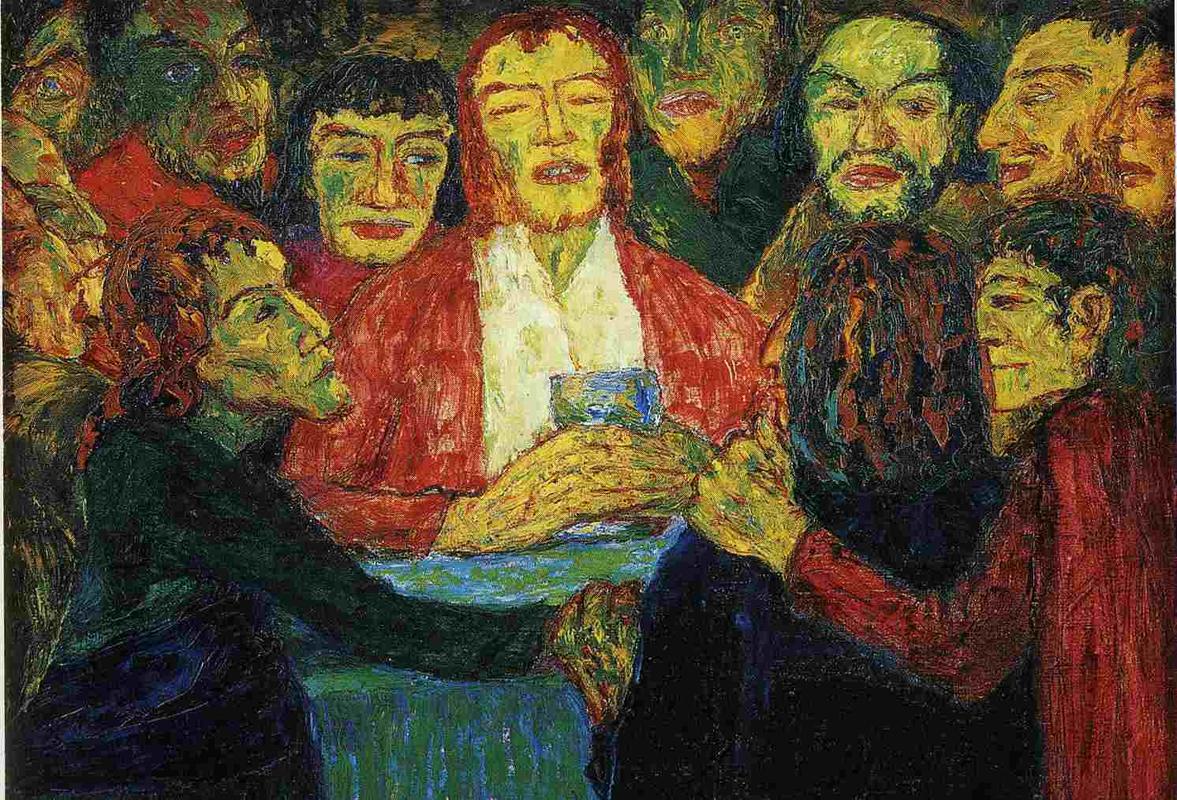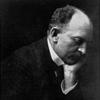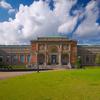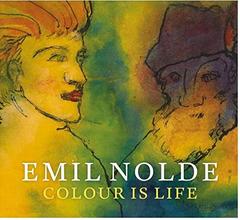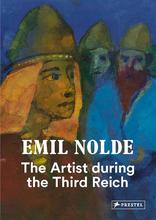More about The Last Supper
- All
- Info
- Shop
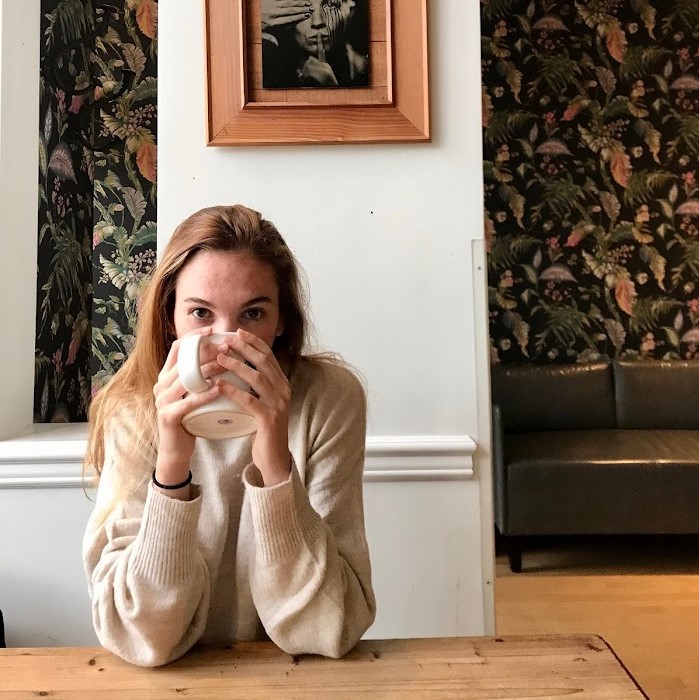
Contributor
Emil Nolde grew up in a highly religious Protestant family and his first dabble into religious painting was, of course, The Last Supper.
Emil Nolde was born in the countryside of Germany where Protestantism prospered and the Nolde Family attended church every Sunday. It is believed his father only had a few books, one of them being (duh) the Bible, which Nolde read over and over throughout his childhood. Having grown up in a strong Protestant family, religion played a crucial role in his life.
However, it wasn’t until he broke with the Die Brucke German Expressionist artist group after only one year and suffered a near-death experience after drinking poisoned water that Nolde began to paint religious themes. The Last Supper was the first and arguably one of the most recognizable paintings by the artist. Even though Nolde was a member of the Nazi Party, Hitler hated The Last Supper calling it a “Mockery of the Divine.” Psh. Pot calling the kettle black much, you evil, devil dictator? A believer that the regime would embrace contemporary German art, Nolde was mistaken and even had over 1,000 paintings confiscated as part of the Nazi plan to destroy what they considered degenerate art.
The Last Supper is a prime example of the artist’s prodigious artistic ability to transform emotion into color. The composition of this painting is completely awkward as all thirteen of Jesus’ apostles huddle around the smushed red-haired messiah as he cups a chalice of wine. Yet this painting was popular and quickly seen as a masterpiece by Nolde, even at the time. Not too shabby, for a fascist Hitler sympathizer. Nolde was quoted to say about his religious paintings, “I followed an irresistible desire for a representation of the deepest spirituality, religion and fervor, without much knowledge of deliberation.”
What makes this religious painting so unique is the complete lack of traditional iconography we normally see again and again in religious art history. And, like Caravaggio, Nolde used the subjects of his local community to depict Jesus and his Thirteen Apostles.
Even though this artist has a problematic history, no one can deny that he took a squished, overly simplistic description of The Last Supper and through color and use of brushstrokes, turned this scene into a dramatic example of religious painting that captures a sincere spirituality. But still, no matter how beautiful Nolde's artwork, no one can argue the fact that he attached yourself to the wrong side of history and dearly suffered the consequences by having your work confiscated by the Nazis. Awful politics and being a bad human aside, he is talented and we are lucky that the rest of Nolde’s paintings exist and can be found in museums across the West.
Sources
- "Emil Nolde — Colour Is Life." Christies. July 27, 2018. Accessed October 11, 2018. https://www.christies.com/features/Emil-Nolde-Colour-is-Life-9322-1.aspx.
- Jones, Jonathan. "Emil Nolde Review – A Seething Visionary Twisted by Antisemitism." The Guardian, February 12, 2018. Accessed October 11, 2018. https://www.theguardian.com/artanddesign/2018/feb/12/emil-nolde-review-….
- Kilroe, Ximena. "Important Art by Emil Nolde." The Art Story. Accessed October 11, 2018. https://www.theartstory.org/artist-nolde-emil-artworks.htm.
- King, Averil. "Religious Works and the Berlin Succession." In Emil Nolde: Artists of the Elements, 59-62. London, UK: Philip Wilson Publishers.
- Levitan, Corey. "The Art That Hitler Hated." La Jolla Light, November 1, 2017. Accessed October 11, 2018. http://www.lajollalight.com/art/sd-cm-ljl-hitler-art-20171101-story.html.
- Selz, Peter. Emil Nolde. MOMA. 1963. Accessed October 11, 2018. https://www.moma.org/documents/moma_catalogue_3443_300062252.pdf.
- Selz, Peter. German Expressionist Painting. Berkeley, CA: University of California Press, 1957. 123-24.
- Weinberg, Rob. "Colour, Controversy and Religion in the Art of Emil Nolde." APOLLO The International Art Magazine, August 9, 2018. Accessed October 11, 2018. https://www.apollo-magazine.com/emil-nolde-colour-life-exhibition-revie….
Featured Content
Here is what Wikipedia says about The Last Supper (Nolde)
The Last Supper is an oil-on-canvas painting by Danish German painter Emil Nolde, created in 1909. It is held in the National Gallery of Denmark, in Copenhagen.
Check out the full Wikipedia article about The Last Supper (Nolde)

